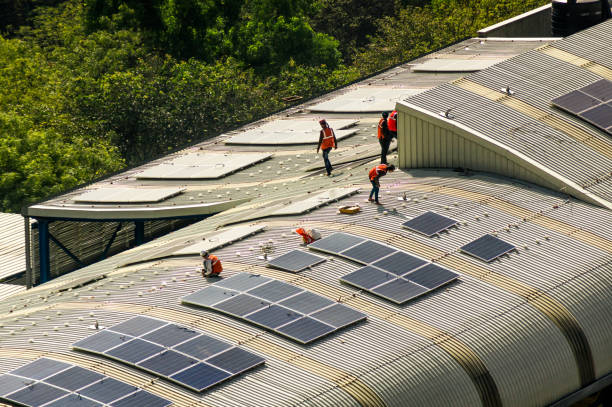
The SunShot Initiative has funded various energy storage research that integrates with concentrating solar power. The SunShot Initiative financed a study on energy storage combined with concentrated solar power. In January 2016, SunShot began tackling photovoltaics storage with its sustainable and holistic integration of energy storage and solar PV funding program.
Six SHINES projects aim to develop cost-effective, scalable, secure, and reliable integrated photovoltaic and energy storage systems. These projects have made significant progress as they approach the mid-point of their three-year performance period. They can now create solutions allowing consumers and utilities to benefit from stored solar energy.
The Electric Power Research Institute project (EPRI) is working with five utility companies to test energy storage and load-management technology. The team has so far deployed a prototype that integrates solar panels, batteries, smart homes technology, and weather-forecasting equipment on two adjacent homes in Northwest Florida.
Researchers are tweaking each home’s configuration to understand better the interaction of all the technologies to generate and store energy based on weather forecasts. The system will store energy automatically when a storm is approaching, so the home can rely on solar power even without active sunlight. This technology helps grid operators balance solar energy supply and demand on the grid. The EPRI team is also working on commercial-scale prototypes to be built shortly.
Austin Energy in Texas integrates energy storage technology in its energy management tools. This allows for better control over the solar energy produced by homes in its service area. The power generated by solar panels in homes is fed into a utility’s grid. Austin Energy’s new distributed energy resource optimizer allows this energy to be diverted into massive battery storage systems so that the utility can use it when needed.
The tool will be further refined throughout the project. However, its development allows the team to proceed with plans for energy storage facilities that include this new system. Austin Energy is not the only entity that will benefit from this project. The utility will create a template that other utilities can use to implement similar systems.
Carnegie Mellon University is also developing a PV and energy storage operating framework. The unique algorithm developed by the team prevents communication malfunctions between rooftop solar panels and utilities. The system will continue to work even if something goes wrong. For example, a storm may knock down power lines. This resilience is crucial for utilities in areas prone to severe storms. CMU will now test the technology at Vermont Electric Cooperative.
These SHINES projects ensure that solar energy is available when the sun doesn’t shine. Energy storage technologies are being developed to allow renewable energy sources such as solar to have a more significant role in our electric grid. This is an essential component of the Energy Department’s grid modernization initiative as we strive to create a grid that can deliver reliable, flexible, and secure electricity.
